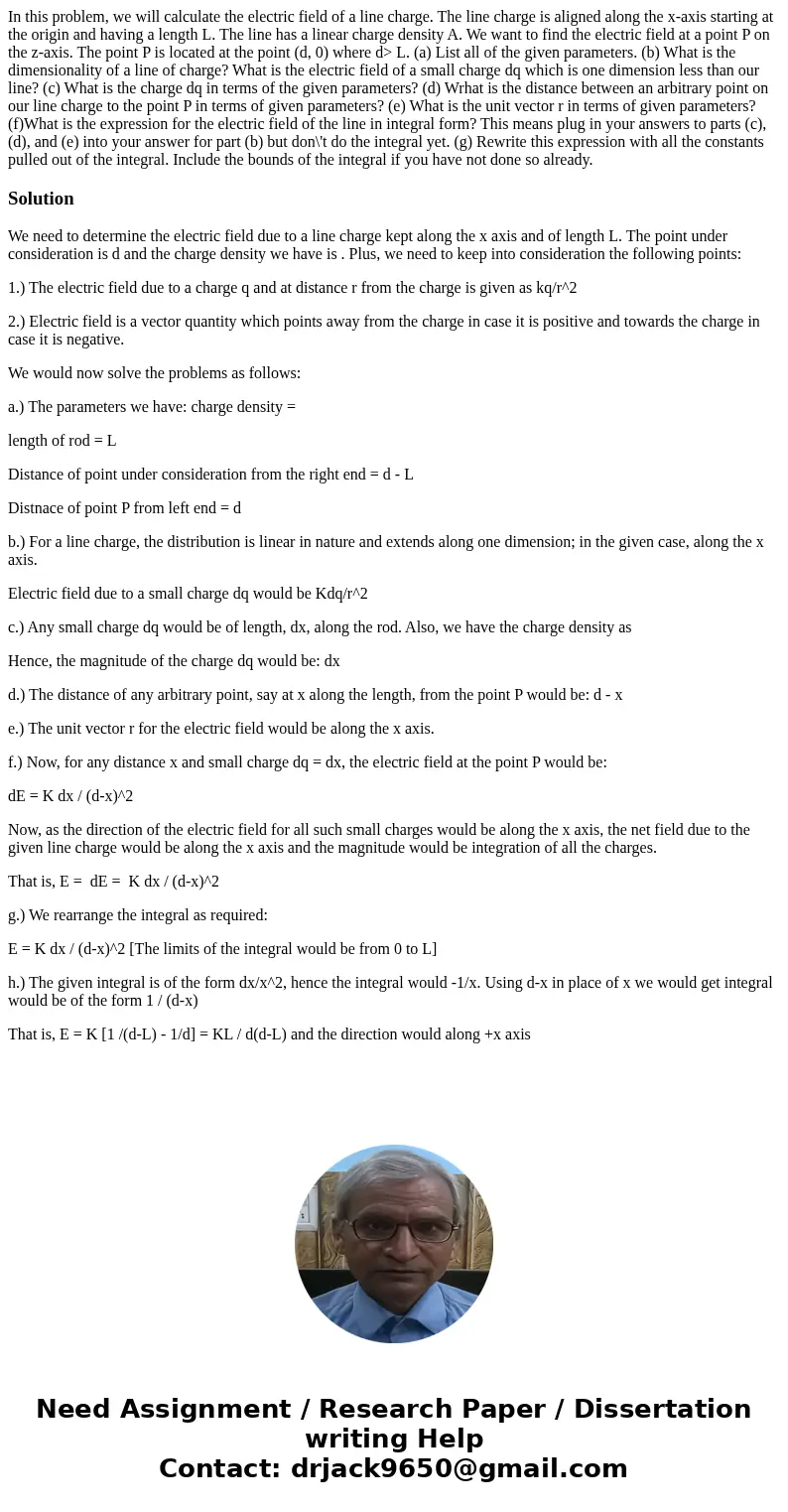In this problem we will calculate the electric field of a li
Solution
We need to determine the electric field due to a line charge kept along the x axis and of length L. The point under consideration is d and the charge density we have is . Plus, we need to keep into consideration the following points:
1.) The electric field due to a charge q and at distance r from the charge is given as kq/r^2
2.) Electric field is a vector quantity which points away from the charge in case it is positive and towards the charge in case it is negative.
We would now solve the problems as follows:
a.) The parameters we have: charge density =
length of rod = L
Distance of point under consideration from the right end = d - L
Distnace of point P from left end = d
b.) For a line charge, the distribution is linear in nature and extends along one dimension; in the given case, along the x axis.
Electric field due to a small charge dq would be Kdq/r^2
c.) Any small charge dq would be of length, dx, along the rod. Also, we have the charge density as
Hence, the magnitude of the charge dq would be: dx
d.) The distance of any arbitrary point, say at x along the length, from the point P would be: d - x
e.) The unit vector r for the electric field would be along the x axis.
f.) Now, for any distance x and small charge dq = dx, the electric field at the point P would be:
dE = K dx / (d-x)^2
Now, as the direction of the electric field for all such small charges would be along the x axis, the net field due to the given line charge would be along the x axis and the magnitude would be integration of all the charges.
That is, E = dE = K dx / (d-x)^2
g.) We rearrange the integral as required:
E = K dx / (d-x)^2 [The limits of the integral would be from 0 to L]
h.) The given integral is of the form dx/x^2, hence the integral would -1/x. Using d-x in place of x we would get integral would be of the form 1 / (d-x)
That is, E = K [1 /(d-L) - 1/d] = KL / d(d-L) and the direction would along +x axis

 Homework Sourse
Homework Sourse